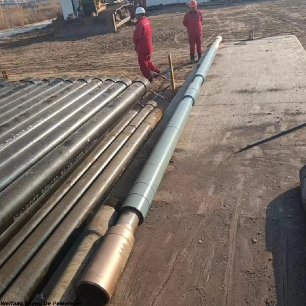The tricone bit is one of the most significant advancements in the drilling industry, revolutionizing oil and gas extraction, mining, and water well drilling. This innovative tool dramatically improved drilling efficiency and durability, making it indispensable in modern drilling operations.
But who invented the tricone bit? What inspired its creation, and how did it change the industry? In this article, we will explore the origins of the tricone bit, its evolution, and its lasting impact on drilling technology.
The Origin of the Tricone Bit
The Need for a More Efficient Drilling Tool
Before the invention of the tricone bit, drilling operations relied primarily on roller cone bits with only two cones. These earlier designs were limited in efficiency, often failing to effectively break through harder rock formations. The need for a more versatile, durable, and high-performance drilling tool became apparent as drilling operations expanded into more challenging terrains.
The Invention by Howard R. Hughes Sr.
The tricone bit was invented by Howard R. Hughes Sr. in 1933. Hughes, an American businessman and engineer, was already well-known for his previous invention of the two-cone roller bit in 1909. However, as drilling demands increased, the limitations of the two-cone design became evident.
Hughes and his team at Hughes Tool Company set out to improve the design, eventually developing the tricone bit. This new drill bit featured three rotating cones, which significantly enhanced drilling efficiency by providing more contact points with the rock surface. The innovation was so impactful that it quickly became the standard for drilling operations worldwide.
The 1933 Patent and Its Significance
In 1933, Hughes Tool Company received the patent for the tricone bit, securing their position as a leader in the drilling equipment industry. The patent allowed the company to dominate the market for decades, as competitors were unable to replicate the design without infringement.
The introduction of the tricone bit revolutionized the drilling industry, allowing for faster penetration rates, reduced wear and tear, and greater adaptability to different geological formations.
How the Tricone Bit Works
The Three-Cone Design
Unlike earlier drill bits, which had only two cones, the tricone bit's three-cone structure provides several key advantages:
More efficient rock breaking: The three-cone design ensures that the bit engages the rock in a more consistent manner.
Better weight distribution: This reduces localized wear and extends the lifespan of the bit.
Increased drilling speed: More cutting points mean faster penetration through hard rock formations.
Types of Tricone Bits
There are two main types of tricone bits, each designed for specific drilling conditions:
Milled-Tooth Tricone Bits:
Used for softer formations such as shale, limestone, and sandstone.
Features sharp teeth that grind through the rock efficiently.
Tungsten Carbide Insert (TCI) Tricone Bits:
Designed for harder formations, including granite and basalt.
Equipped with tungsten carbide inserts, which provide greater durability and wear resistance.
These different variations allow drillers to select the most appropriate tricone bit for their specific geological challenges.
The Evolution of Tricone Bit Technology
Advancements in Materials and Coatings
Since its invention, the tricone bit has undergone numerous improvements. Early models were made from basic steel, but modern versions utilize high-strength alloys and tungsten carbide coatings to improve durability. Some advanced designs even feature diamond-enhanced inserts for extreme drilling conditions.
Sealed Bearing vs. Open Bearing Designs
Modern tricone bits come in sealed bearing and open bearing designs:
The choice between these designs depends on drilling depth, duration, and environmental conditions.
The Lasting Impact of the Tricone Bit
Transforming the Oil and Gas Industry
The tricone bit's ability to drill through diverse rock formations made it a game-changer for oil and gas exploration. It enabled drilling rigs to reach deeper reservoirs, unlocking previously inaccessible energy resources.
Contributions to Mining and Water Well Drilling
Beyond the oil industry, the tricone bit has also had a profound impact on:
These advancements have helped shape modern infrastructure, energy production, and resource extraction industries.
Conclusion
The invention of the tricone bit by Howard R. Hughes Sr. in 1933 revolutionized drilling technology. With its three-cone design, improved efficiency, and adaptability, it quickly became the industry standard, transforming oil, gas, mining, and water well drilling operations.
Over the years, continued advancements in materials and engineering have further enhanced the tricone bit's durability and performance, ensuring its relevance in modern drilling applications. Today, companies like ShengDe continue to develop and refine tricone bit technology, providing cutting-edge solutions for the global drilling industry.
As we look ahead, the tricone bit remains a symbol of innovation and progress, showcasing the power of engineering to overcome even the toughest geological challenges.



















